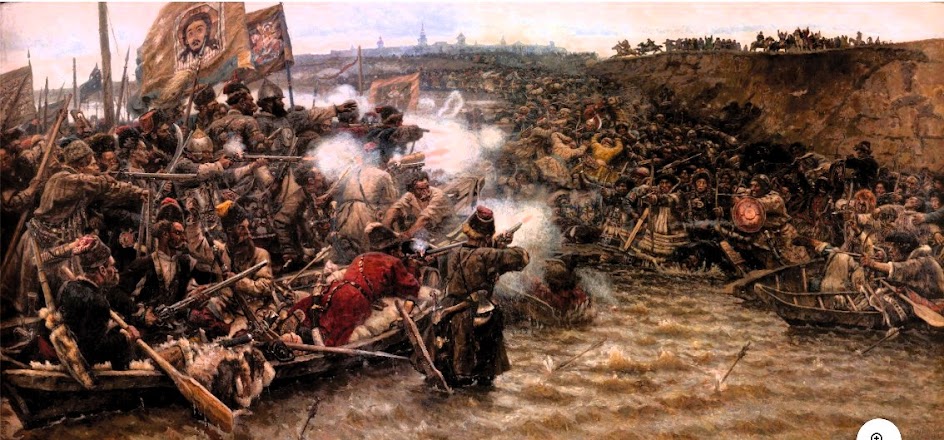Vasily Ivanovich Surikov (24 January 1848 – 19 March 1916) was a Russian Realist history painter. Many of his works have become familiar to the general public through their use as illustrations.
He was born to an old Yenisei Cossack family descending from Don Cossacks that had settled in Siberia. His father was a Collegiate Registrar, a civil service rank that often served as postmasters. In 1854, as a result of his father being reassigned, the family moved to the village of Sukhobuzimskoye, where he began his primary education.
In 1859, his father died of tuberculosis so the family returned to Krasnoyarsk and were forced to rent the second floor of their house to survive financially. He began drawing while attending the district school and was encouraged by the local art teacher. His first formal work dates from 1862, but his family could not afford to continue his education, and he became a clerk in a government office. This brought him into contact with Pavel Zamyatin, the governor of Yenisei, who was able to find him a patron: Pyotr Kuznetsov, a local merchant who owned several small gold mines.
In 1868, he rode on horseback to Saint Petersburg but was unable to qualify for admission to the Imperial Academy of Arts, so he studied at the drawing school of the Imperial Society for the Encouragement of the Arts. After a year there, he was allowed to audit classes at the academy and became a full-time pupil toward the end of 1869.
From 1869 to 1875, he studied with Pavel Chistyakov, Bogdan Willewalde, and Pyotr Shamshin, winning several medals. His great attention to composition earned him the nickname "The Composer". In 1875, he graduated with the title of Artist, first degree. More on Vasily Ivanovich Surikov
Please visit my other blogs: Art Collector, Mythology, Marine Art, Portrait of a Lady, The Orientalist, Art of the Nude and The Canals of Venice, Middle East Artists, 365 Saints, 365 Days, and Biblical Icons, also visit my Boards on Pinterest
Images are copyright of their respective owners, assignees or others.
Some Images may be subject to copyright
I don't own any of these images - credit is always given when due unless
it is unknown to me. if I post your images without your permission, please tell
me.
I do not sell art, art prints, framed posters or reproductions. Ads are
shown only to compensate the hosting expenses.
If you enjoyed this post, please share with friends and family.
Thank you for visiting my blog and also for liking its posts and pages.
Please note that the content of this post primarily consists of articles
available from Wikipedia or other free sources online.




No comments:
Post a Comment